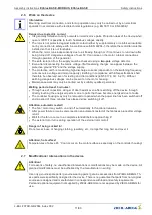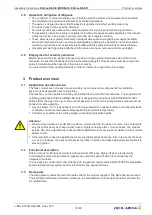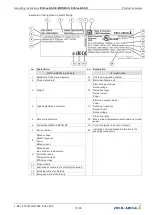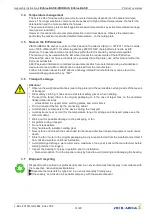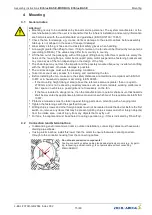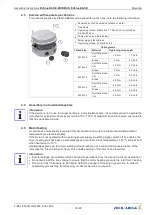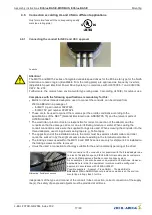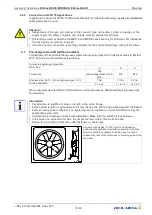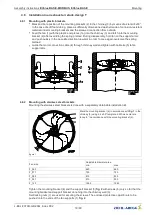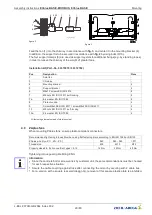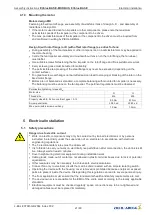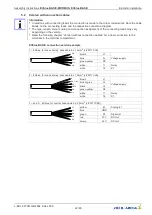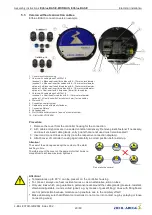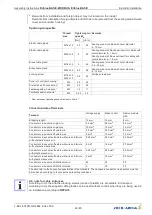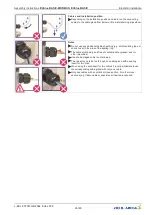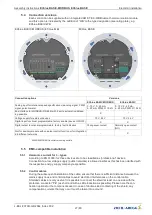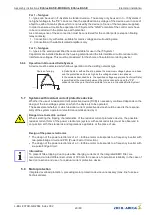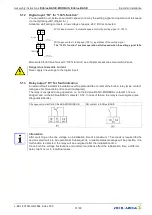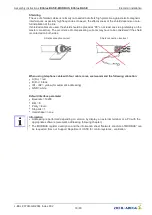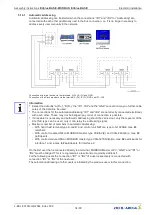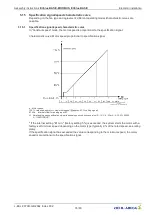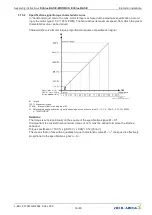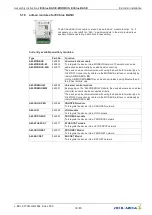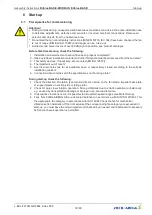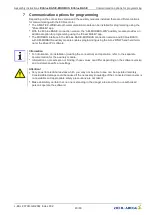
5.3.1
Assembly notes for cable glands
Correct use of the cable glands is of crucial importance for high operational reliability; note the
following instructions.
Construction of a cable gland
1. O-ring
2. Collar with connecting thread
3. seal insert
4. Union nut
Attention!
If the tightening torque of the cable gland is too low or too high, this prevents the O-ring from having
suf
fi
cient contact with the housing and the seal insert on the cable. This results in leaks and/or poor
strain relief on the cables.
Fitting cable glands
"
Select the size of the cable gland and the seal insert to match the
outer diameter of the cable.
"
Check the housing for damage in the area of the sealing surface
before installing the cable gland.
"
Ensure that the O-ring and seal insert are
fi
tted.
"
Place the cable gland at a right angle on the housing and screw in.
Inserting the cable, tightening method
"
Tighten the collar to the speci
fi
ed torque with a suitable torque
wrench.
"
Insert the cable through the cable gland into the housing.
"
Fit the union nut by hand and tighten slightly.
"
Tighten the union nut to the speci
fi
ed torque of the cable gland using
the torque wrench.
"
To insert two cables through one cable gland, use a seal insert with 2
boreholes.
"
The seal insert supplied can only be used for a limited range of cable
diameters. It is also possible to use seal inserts with a different inner
diameter.
Seal insert for 2 cables
2 x black
Sealing area 8
…
12 mm
1 x blue
Sealing area 6
…
7.9 mm
Version with cable glands 3 x M20x1.5
"
As delivered, the 3 enclosed cable glands are
fi
tted with one black
seal insert and two blue seal inserts.
"
In addition, two black and one blue seal inserts are included sepa-
rately, and can be used if required.
Sealing areas
Black seal insert: For cables with 8
…
12 mm outer diameterBlue seal
insert: For cables with 6
…
7.9 mm outer diameter
Assembly instructions
ECblue BASIC-MODBUS, ECblue BASIC
Electrical installation
L-BAL-F079D-GB 2044 Index 002
Part.-No.
25/80

